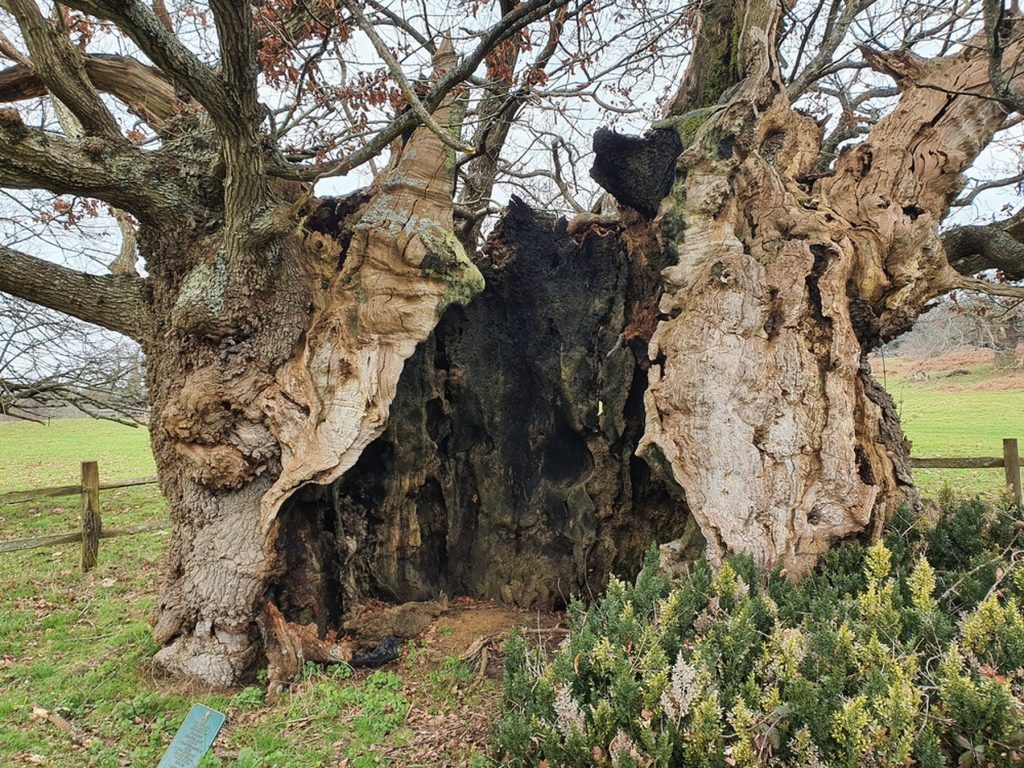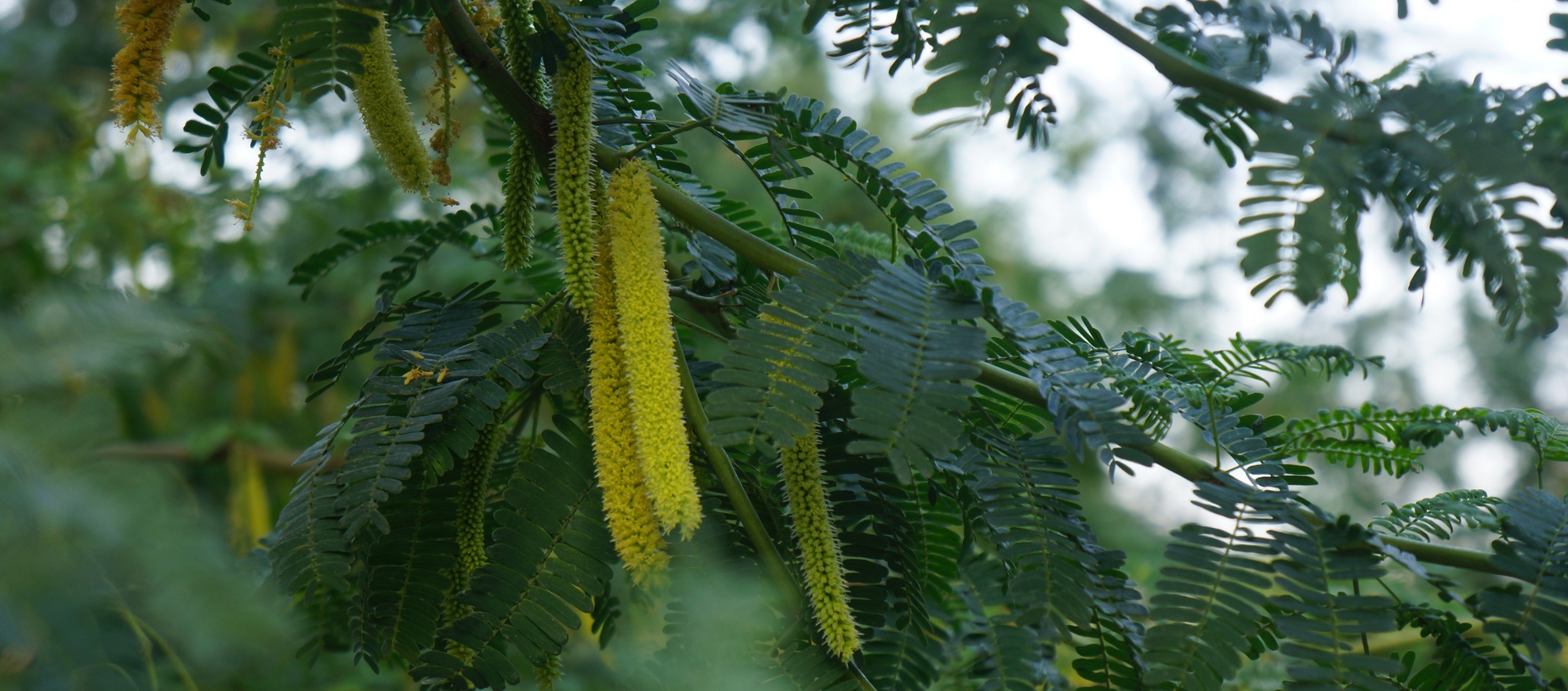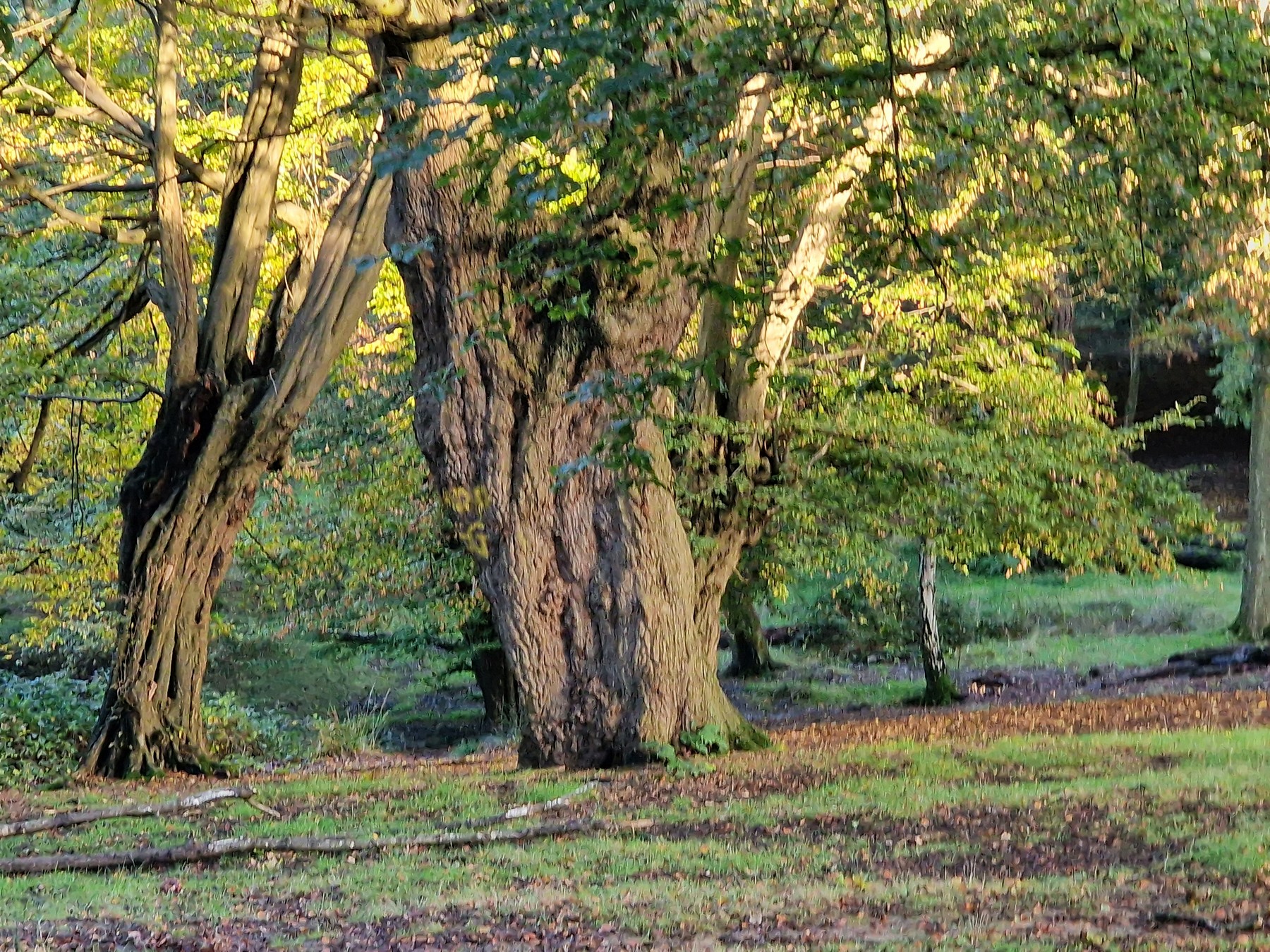The UK is blessed with a relative abundance of trees classed as Ancient or Veteran when compared to most other countries and there is a growing awareness of their importance. Currently there is no automatic legal protection in place for them so we must raise awareness and look after these unique and valuable habitats. They play a vital role in maintaining a healthy ecosystem, yet human pressures and climate change potentially put them at risk.
So what is an Ancient or Veteran tree? The names imply old, of course and we can view these as the last two, of five life stages (there are different views as to how many stages there are; for our purposes, we’ll stick with five): young, early mature, mature, veteran and ancient.
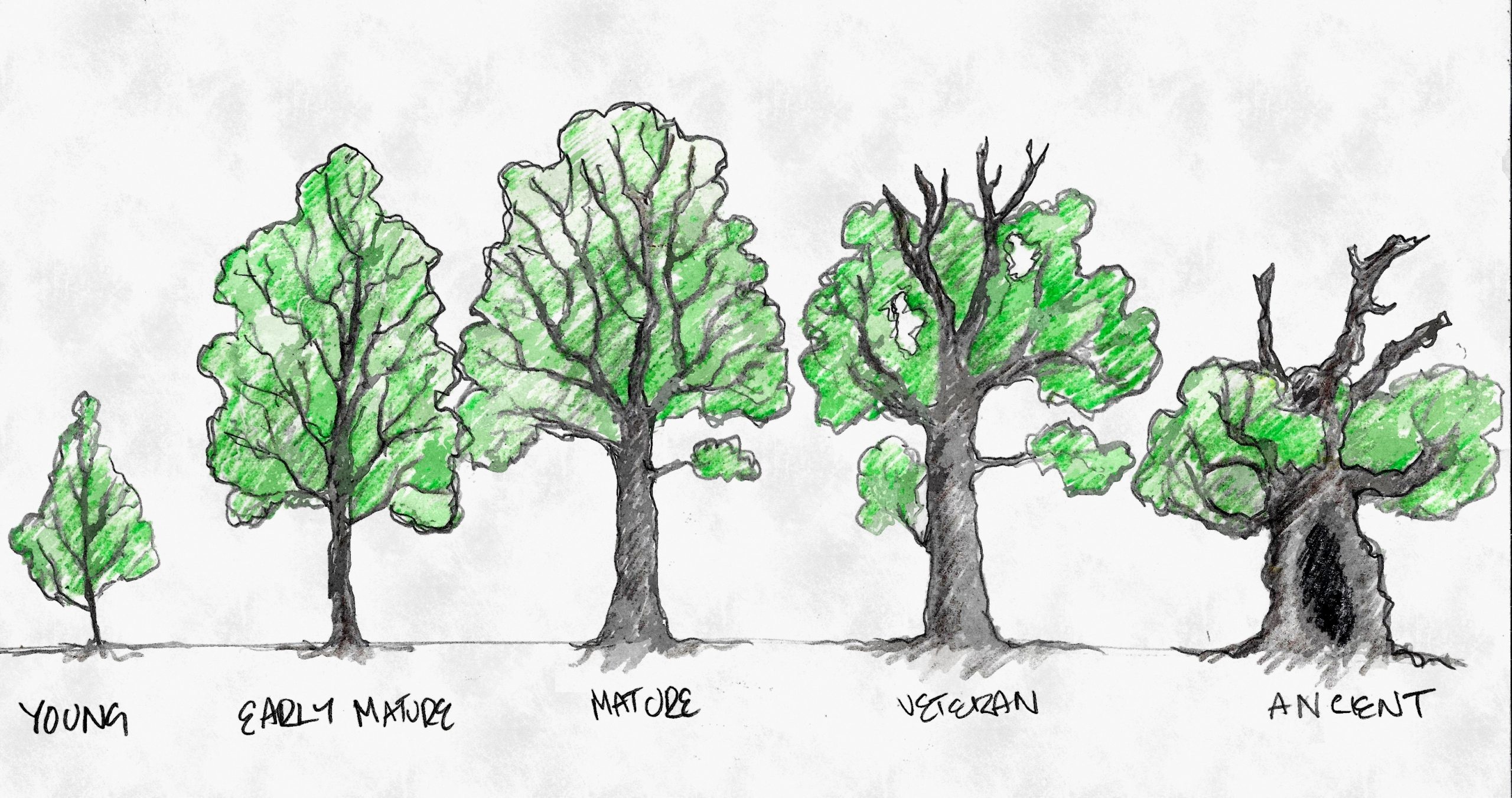
So here we’re interested, obviously, in the last two stages of life; not just because they look great and are full of character (they are) but because these trees carry a disproportionately high level of additional life. They are holobionts, the central component of a whole micro-ecosystem; the older they get, the more life they support. This includes many obligate saproxylic insects and fungi that depend on dead wood in trees for their existence.
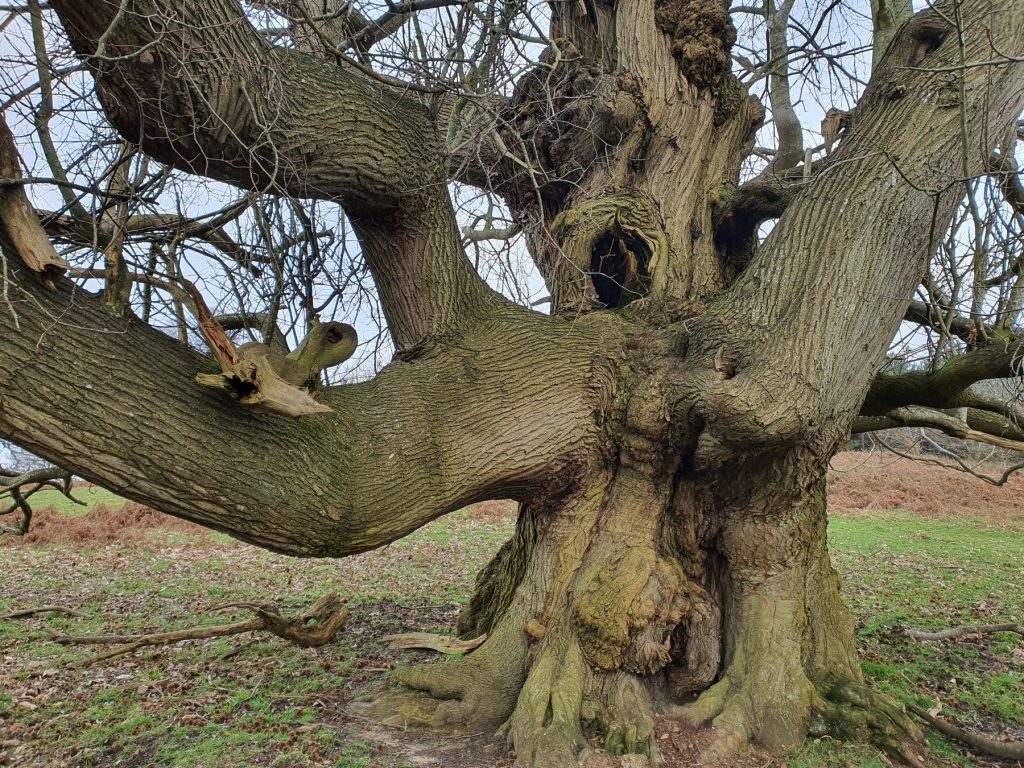
Viewing ancient trees as ecosystem habitats is a relatively new understanding, that arborists, land managers etc. are coming to appreciate. The very features once seen as defects – hollowness, decay, deadwood, fungal presence, cavities and hazard beam cracks – are now understood as beneficial features. They do need to be assessed in the light of human interaction and safety, of course, but many of these trees originate in old pasture woods or deer parks, away from human presence. According to recent comments by Dr. Victoria Nolan, there may be as many as 2 million ancient trees in the UK, the majority of which are unrecorded; there are around 170,000 trees so far listed in the Ancient Tree Inventory, an online database of trees run by the Woodland Trust.
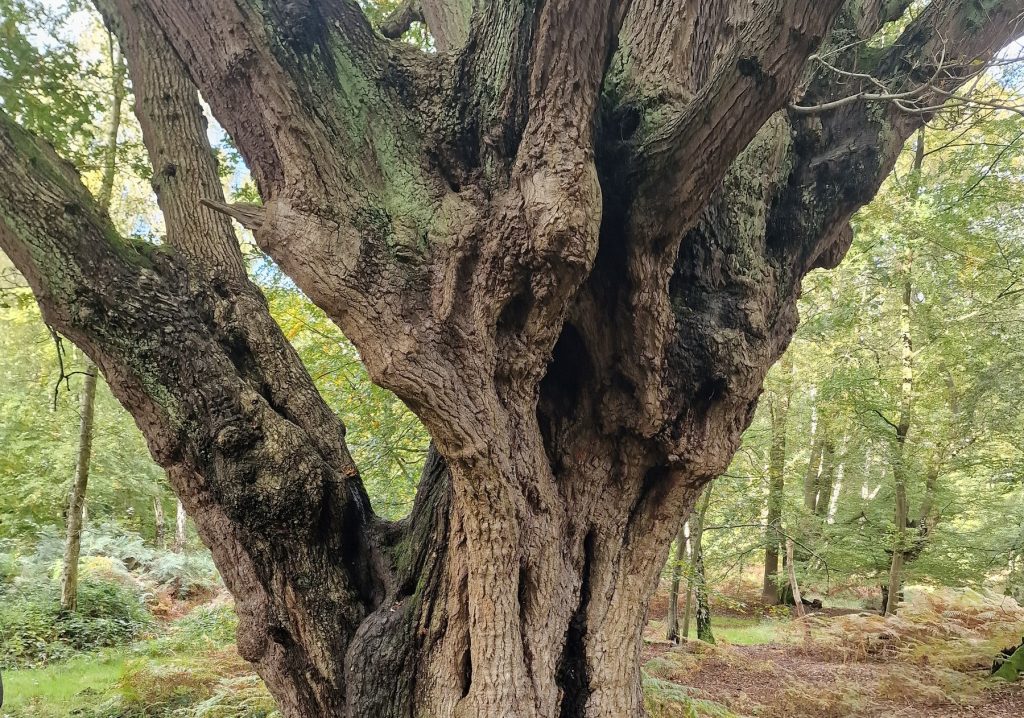
Another useful organisation dedicated to education and the care of ancient and veteran tress is the Ancient Tree Forum, which runs a very useful VETcert scheme for those dealing with such trees. They don’t seem to run many courses, unfortunately, but I’m on the waiting list! I have, however, worked with a number of such trees over the years and am familiar with their characteristics and requirements.
Most (but not all) of our really old trees are lapsed pollards. Pollarding, I’m sure you know, is the removal of all branches for timber products at a height to prevent mammals browsing on the regrowth. This was a typical feature of pasture woods trees, and it prolongs the life of a tree considerably, you might say indefinitely (since a tree only has living material of approximately 20 years, all older wood having died and become heartwood). Pollard cycles varied but were typically done every 15-25 years. Unfortunately, this ceased as a common practice around 200 years ago, hence the expression, lapsed pollard. It brings challenges to on-going maintenance as it’s not always possible to re-pollard once too much time has elapsed as older wood has less response mechanisms (adventitious buds) or the necessary vitality.
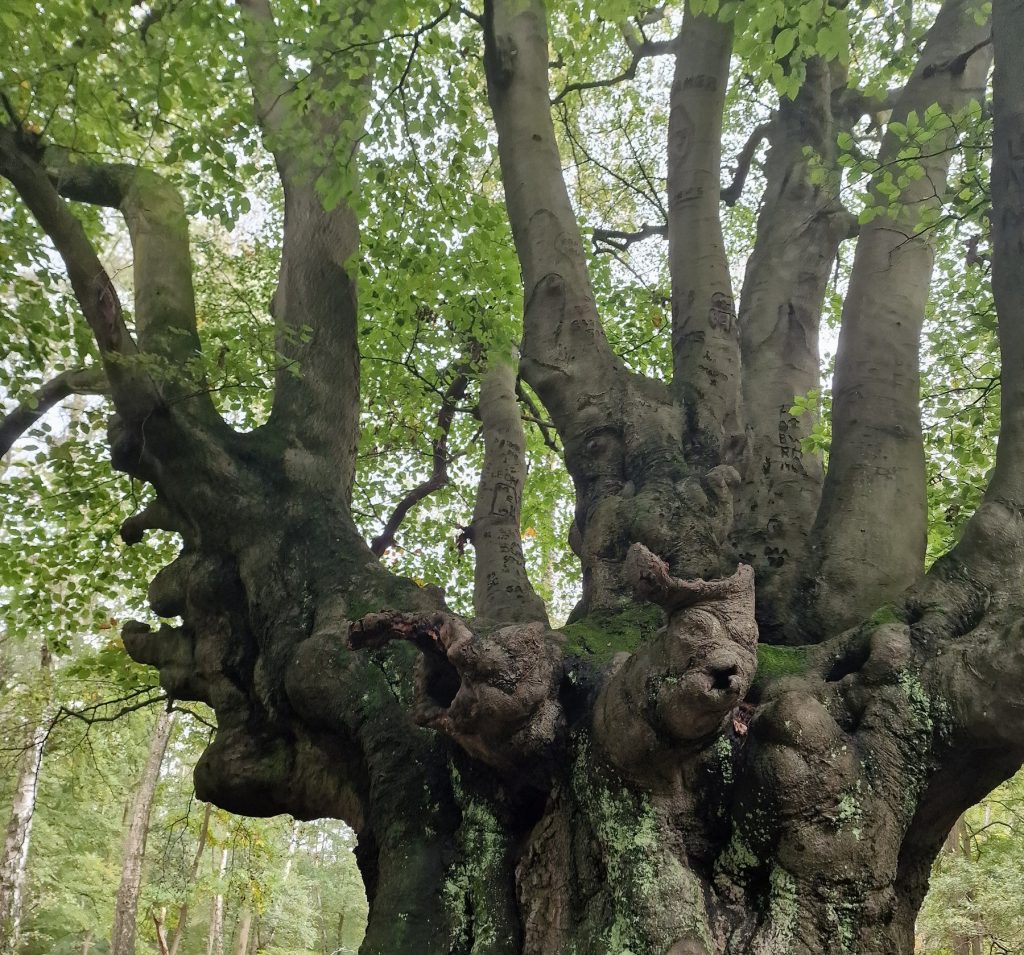
So how old does a tree have to be to be considered ancient? It depends on species and environmental conditions, and it should only be used in combination with other features (hollowness, for example). Oaks are by far the most common ancient species, for these, along with beech and ash, 400 years old is considered the threshold. Yews are mere babies at this age, and don’t get to be ancient until they hit 800. Other trees which are fast growing and short lived, such as willows, poplar or birch, are ancient at 150 years.
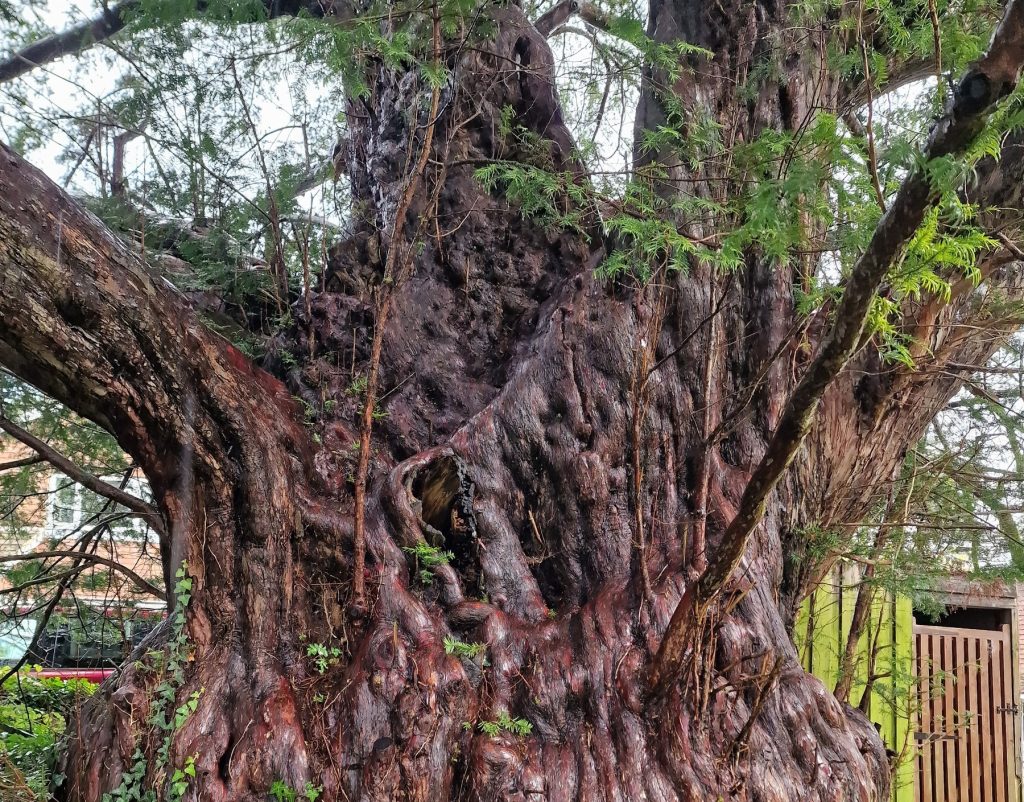
As mentioned, ancient and veteran trees give rise to a whole host of life, from bats, birds and squirrels, who might forage for insects and nuts or make nests in the tree or trunk, to saproxylic (dead wood dependant) insects and fungi. For some species, this habitat is obligate, ie. there is no alternative. There will also be a range of epiphytes, in the form of mosses and lichens, plus occasional plants that grow in the crotches. To the Western seaboard, common polypody ferns will festoon the branches of trees in temperate rainforest. Such trees will be physically small, maybe only 2-4m high, yet still could be ancient, which is why size isn’t always an indicator.
An essential part of the habitat is the deadwood and this appears in two main forms, hollows and cavities and the dying of main structural branches in the process of retrenchment. A trees’ height and size is governed by several things, the most important being reiteration of crown structure and hydraulic lift. In the UK, the former is most likely to be the limiting factor and simply means that the crown has fully replicated (reiterated) itself to the point where it cannot grow any more as leaf mass demands begin to outstrip root supply ability. At this point the tree will retrench, forming a newer secondary crown lower down and withdrawing from older structure, which gradually dies off.
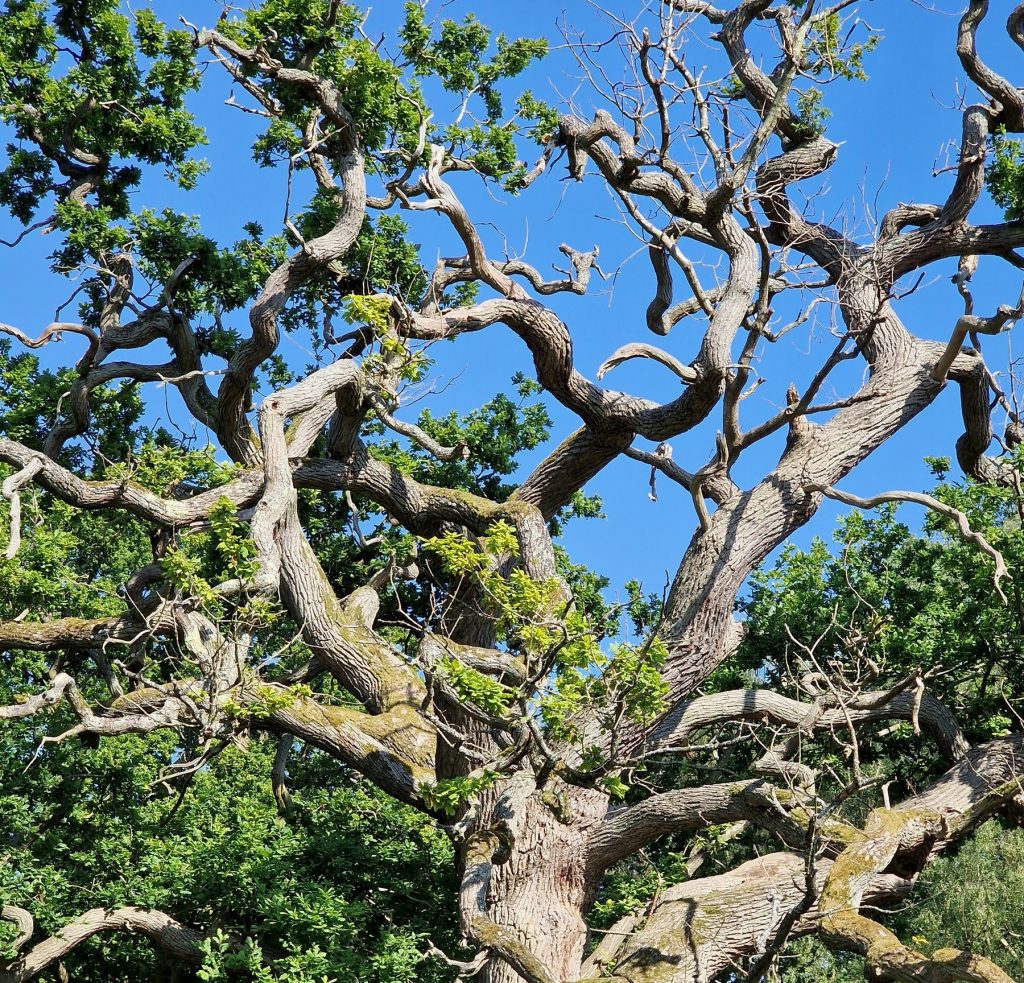
Hollows in trees make great habitat for insects, fungi, birds, bats and mammals. Bats need crevices and cracks in wood or under bark with entrances at the base, whilst birds and squirrels will form nests in larger cavities, though there are no hard-and fast rules and bats overwinter in different places to their spring and summer roosts. Cavities can be water-filled (called dendrothelm) and create unique habitat opportunities. Such cavities may decay more slowly than those which are merely damp, as oxygen is required.
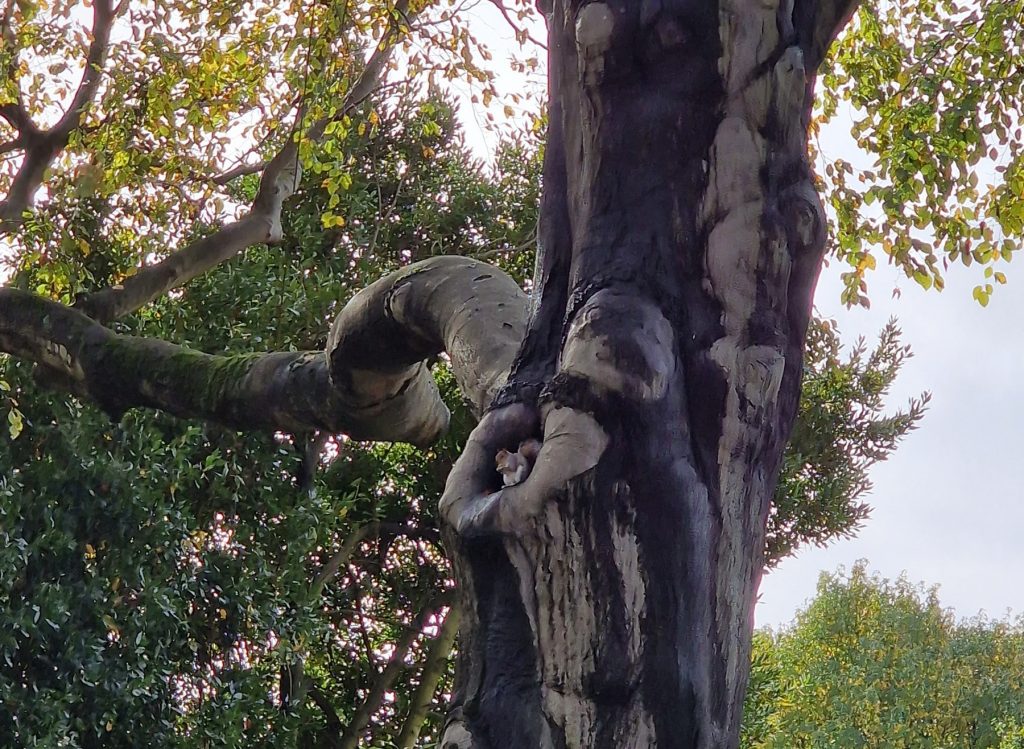
Ancient trees are survivors. They will have been through a lot and have suffered a lot. They can be afflicted by fire (deliberate or from lightning), compaction, (people, vehicles or livestock) and environmental issues such as drought stress or prolonged flooding. Climate change is adding stress factors that these trees have not had to deal with before and is of real concern.
The tree in the picture below is one of my favourites, a phoenix oak tree which has blown over and continued living, forming a new canopy. It may not qualify as ancient, but certainly is a veteran.
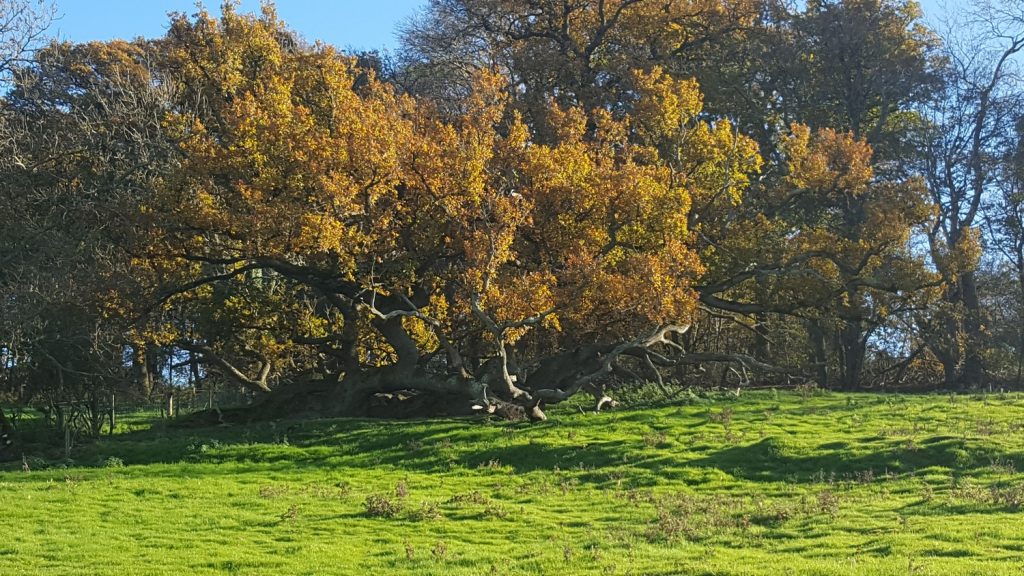
These trees deserve and need our care and attention to conserve them for as long as possible. Across the UK, we have a huge gap in the tree life-stage, with insufficient mature trees moving towards veteran and ancient trees, so they can only decline in number over time. As they go, they will take essential habitat with them. In my next post I will look at what we can do to fill the gap and ensure we retain the diversity of flora, fauna and fungi needed to maintain ecosystem health into the future.
Finally, I leave you with this magnificent tree, the Queen Elizabeth I tree. During her reign, she is said to have stood by this tree when hunting. The tales these trees could tell.
